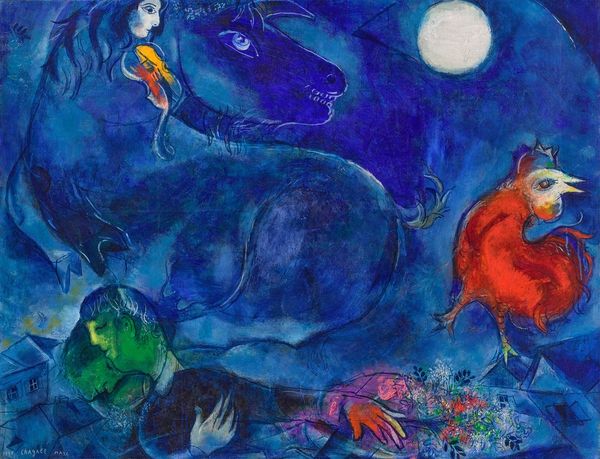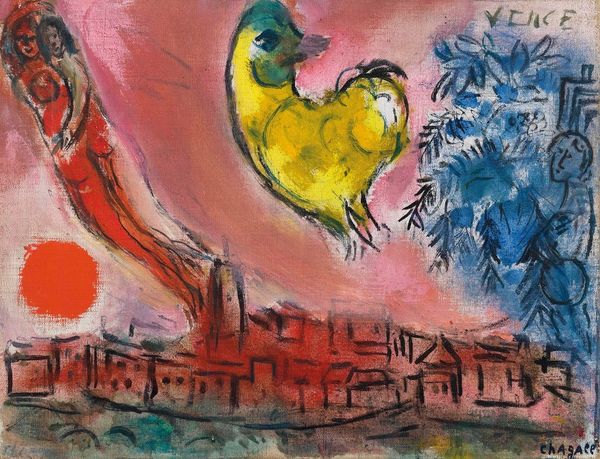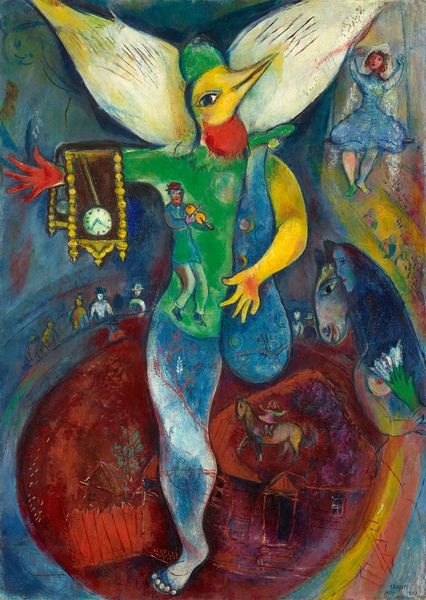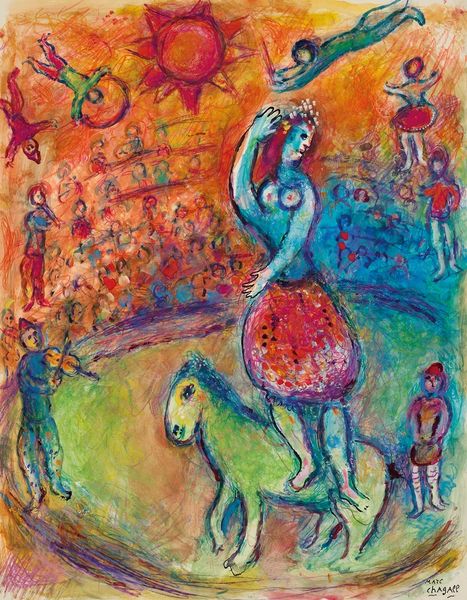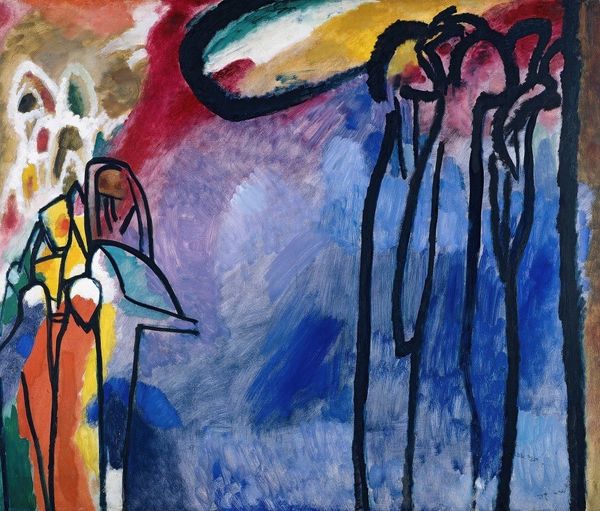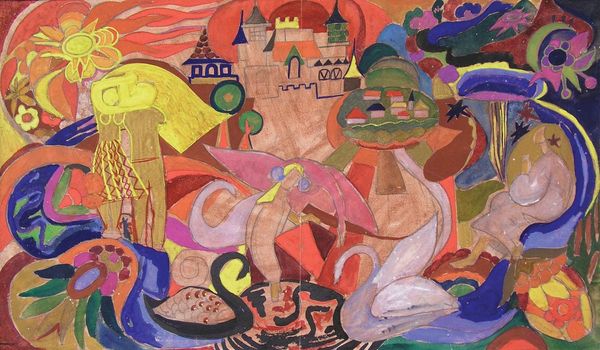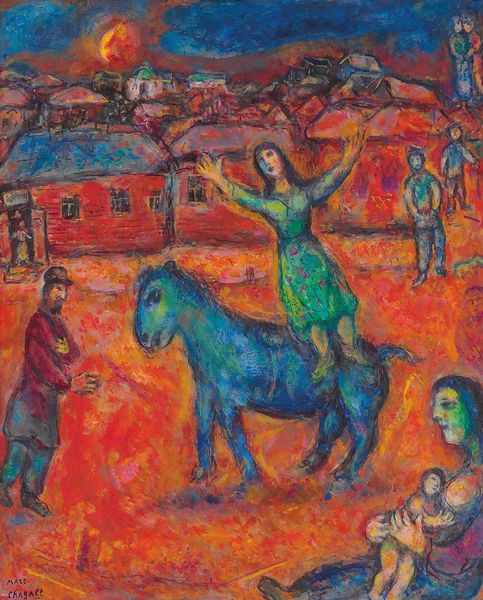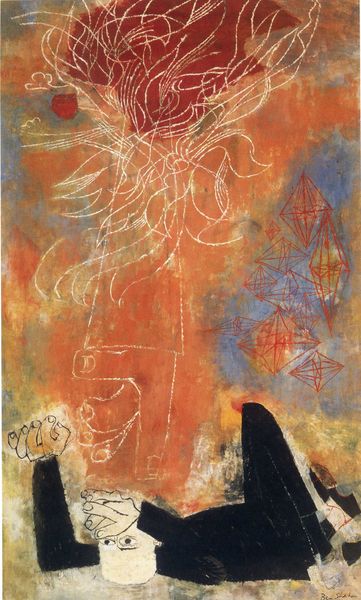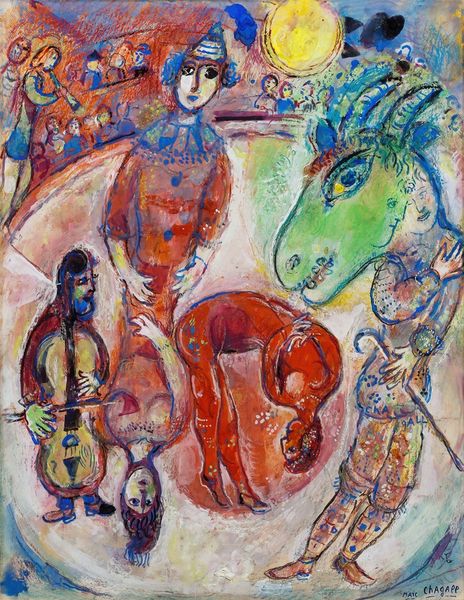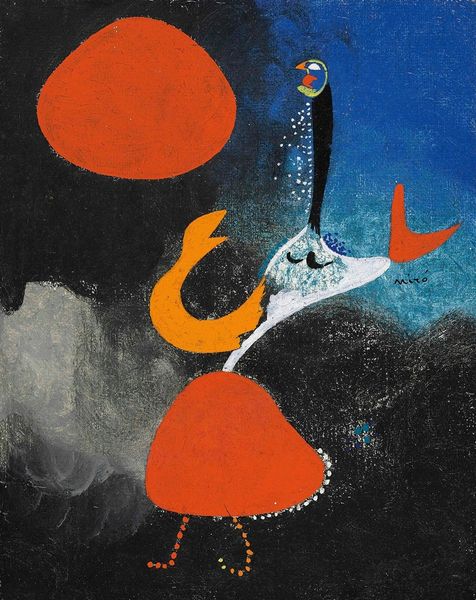
Copyright: Modern Artists: Artvee
Curator: Immediately striking, isn't it? The vibrant, almost clashing colours grab your attention. Editor: They do! A primal, almost visceral response to that bold use of colour. What exactly are we looking at? Curator: This is Marc Chagall's "La Bastille, étude", from 1954. It's fascinating how Chagall combines figuration, cityscape, and that distinct expressionist touch. Notice the impasto—the thickly applied paint—it lends a real texture and energy to the surface. Editor: The subject matter seems secondary to the application of the pigment itself. It makes one wonder about the availability and quality of the paint itself. These blues and reds, for example, speak to industrial developments. Curator: Interesting. Considering its creation date, one can interpret "La Bastille, étude" as part of post-war discourse around nationhood and resilience. Editor: It looks more like naive art with folk themes to me than making any grand political statement. Curator: But consider where this work might have been displayed: museums, galleries—places where ideas about national identity were debated and solidified after a period of massive upheaval. Even this art can influence those public roles of memory and imagery! Editor: I wonder about his process though. Was this oil paint commercially manufactured, or did Chagall employ assistants? Did the dealer control production via contract? Curator: Well, it gives us plenty to consider; from his personal choices in representation to its public-facing implications in art and social history. Editor: Exactly. How the labour shapes meaning, beyond purely representational interpretation. Thank you for sharing!
Comments
No comments
Be the first to comment and join the conversation on the ultimate creative platform.
